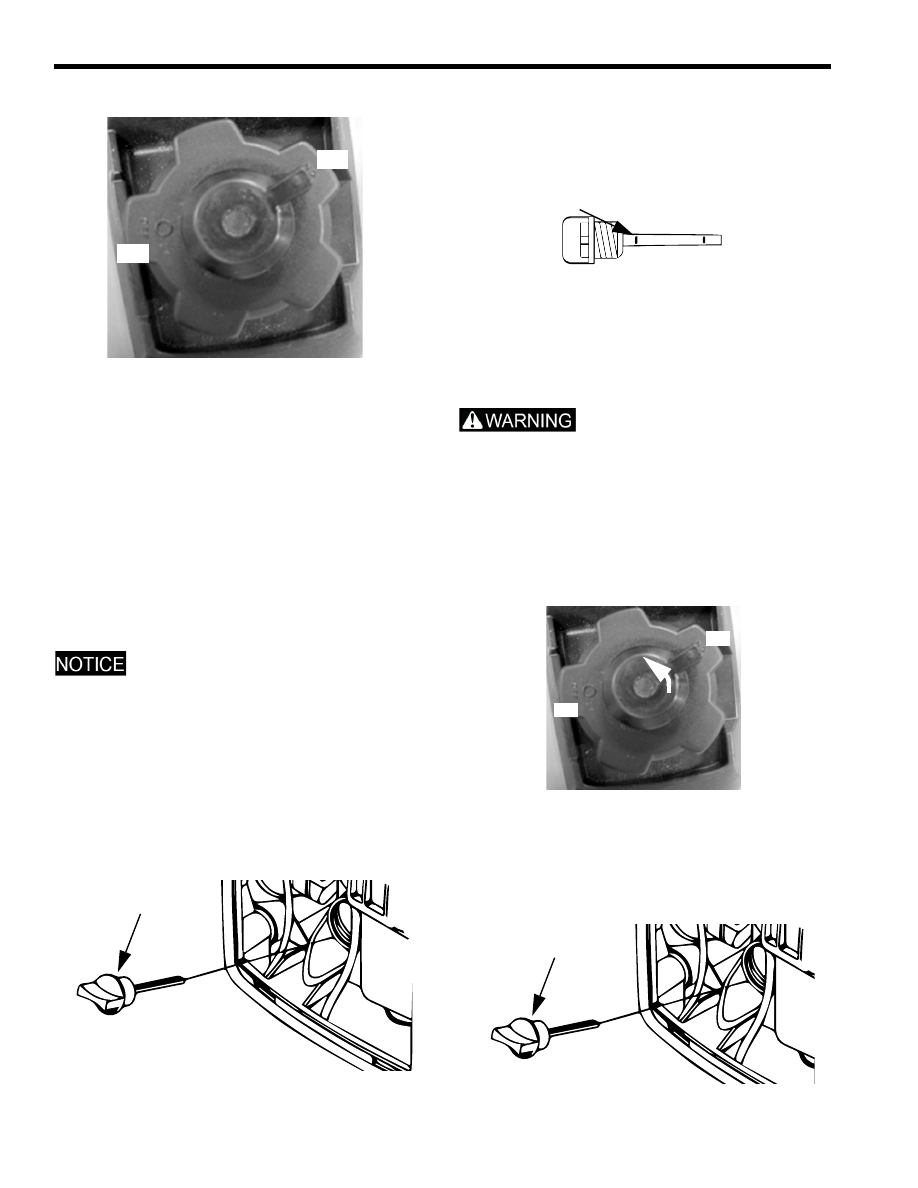Snowmobile Polaris Power P1000i, P2000i (2018 year). Manual - part 8

30
MAINTENANCE
storage or transport, or ON to run the generator.
Engine Oil
Oil Recommendation
Oil directly affects performance and service life. Use a 4-
stroke automotive detergent oil. Polaris 5W-30 Engine Oil
is recommended for this generator.
The SAE oil viscosity and service category are in the API
label on the oil container. Polaris recommends the use of
API service category “SJ” or later, equivalent oil.
Oil Level Inspection
Failure to use the proper 4-stroke engine oil may result in
engine damage.
Using non-recommended oil may cause serious engine
damage. Never substitute or mix oil brands.
NOTE: Inspect the oil level before each use with the
engine stopped and the generator on a level surface.
1.
Remove the maintenance cover.
2.
Remove the oil filler cap / dipstick (A) and wipe it
clean.
3.
Insert the dipstick (A) into filler neck, without screwing
it in, to inspect the oil level.
4.
Remove the dipstick and verify that the oil is at the
upper limit (B). Add additional oil and inspect the level
as needed until the upper limit has been reached.
5.
Re-install the dipstick (A).
6.
Re-install the maintenance cover.
Oil Change Procedure
Oil may be hot. Do not allow hot oil to come into
contact with skin, as serious burns may result.
NOTE: Drain the oil while the engine is warm to
assure rapid and complete draining.
1.
Start the engine and allow it to run for a few minutes.
Stop the engine.
2.
Position engine switch and fuel cap vent lever to OFF.
3.
Remove the maintenance cover (Page 29).
4.
Place a drain pan beneath the generator for used oil.
5.
Remove the oil filler cap / dipstick (A), tip the generator
toward the oil filler neck, and drain the oil into a drain
pan.
OFF
ON
A
B
OFF
ON
A